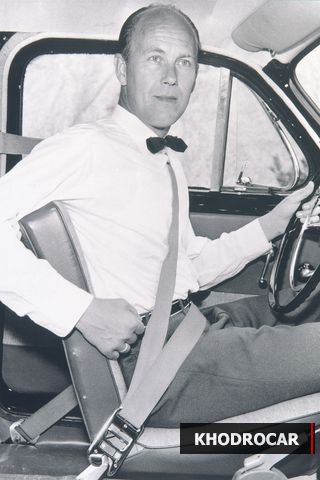Volvo Invented the Modern Seatbelt With Help From the Swedish National Power Company
And how it became ubiquitous in modern cars.
Khodrocar - In the 1950s, Vattenfall, the Swedish national power company, had a problem—its workforce was dying in car crashes. Two engineers with the power company, Bengt Odelgard and Per-Olof Weman, were given the task of making employees' cars safer. Their research led to the invention of the three-point seat belt by Volvo, Sweden's largest car company.
Based on research by the US Air Force, Odelgard and Weman came to the conclusion that a diagonal restraint, rather than a simple lap-belt, would vastly improve safety. In 1956, Vattenfall started fitting two-point across-the-chest safety belts to its cars, and soon after that, Volvo boss Gunnar Engellau became interested in the tech.
Engellau appointed Nils Bohlin, a former aircraft engineer, to be Volvo's first-ever safety chief in 1958. Bohlin researched ejector seats extensively, and his knowledge paired with Vattenfall's invention led him to create the three-point safety belt we're familiar with today. Essentially, Bohlin combined the lap belt used in most cars at the time with the diagonal belt invented by Odelgard and Weman.

The three-point seatbelt was first introduced by Volvo in 1959, available on the PV544 and Amazon. What Volvo did next was rather amazing. While the automaker held the patent on the three-point restraint, Volvo allowed competing automakers to use the design for free, knowing that it would save countless lives.
Based on research by the US Air Force, Odelgard and Weman came to the conclusion that a diagonal restraint, rather than a simple lap-belt, would vastly improve safety. In 1956, Vattenfall started fitting two-point across-the-chest safety belts to its cars, and soon after that, Volvo boss Gunnar Engellau became interested in the tech.
Engellau appointed Nils Bohlin, a former aircraft engineer, to be Volvo's first-ever safety chief in 1958. Bohlin researched ejector seats extensively, and his knowledge paired with Vattenfall's invention led him to create the three-point safety belt we're familiar with today. Essentially, Bohlin combined the lap belt used in most cars at the time with the diagonal belt invented by Odelgard and Weman.

The three-point seatbelt was first introduced by Volvo in 1959, available on the PV544 and Amazon. What Volvo did next was rather amazing. While the automaker held the patent on the three-point restraint, Volvo allowed competing automakers to use the design for free, knowing that it would save countless lives.
Latest News


